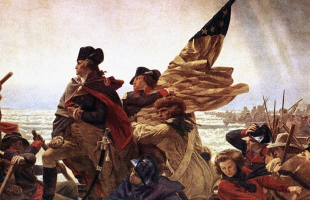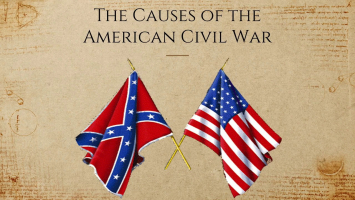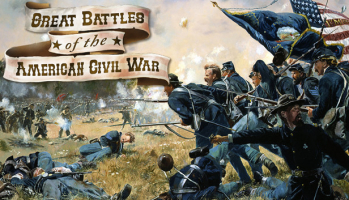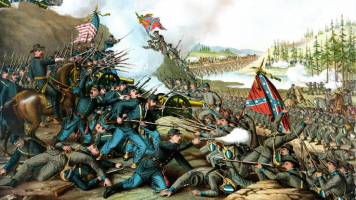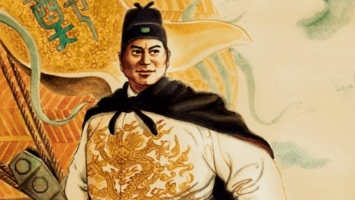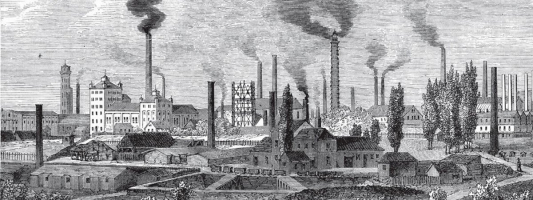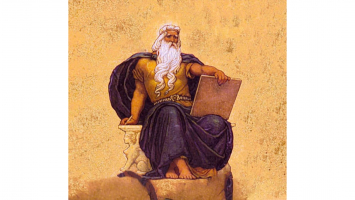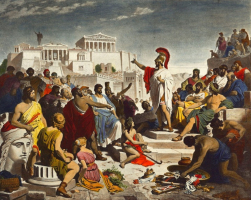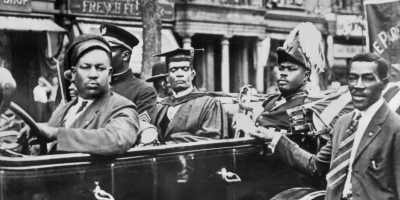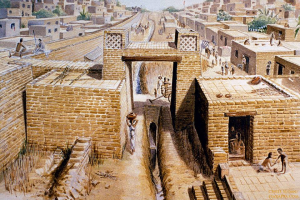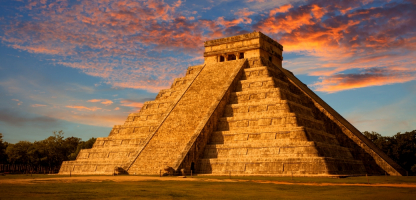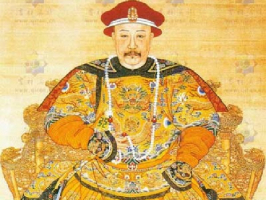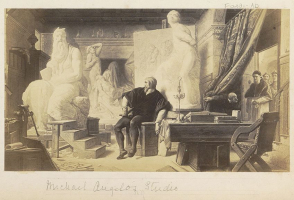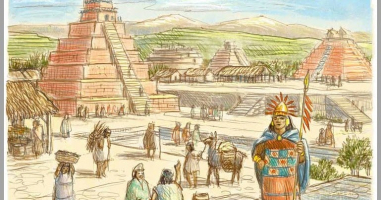Top 12 Interesting Facts About The American Civil War
After years of simmering tensions over slavery, state's rights, and westward expansion between northern and southern states, the American Civil War broke out ... read more...in 1861. Seven southern states formed the Confederate States of America after Abraham Lincoln was elected president in 1860; four additional states soon joined them. The Confederate surrender in 1865 marked the conclusion of the Civil War, commonly known as the War Between the States. With over 625,000 of the 2.4 million soldiers killed, millions more hurt, and a large portion of the South in ruins, the fight was the most expensive and lethal combat ever waged on American territory. Many interesting facts about the American Civil War will be listed below!
-
The Confederate States of America, a grouping of eleven southern states that seceded from the Union in 1860 and 1861, and the United States of America fought each other in the American Civil War. The long-standing dispute about the legitimacy of slavery is largely responsible for how the conflict got started.
22 million people resided in the North at the start of the Civil War, whereas 9 million people (almost 4 million of them were slaves) did so in the South. Additionally, the North possessed more resources such as money, factories, horses, railroads, and farms. These benefits made the United States appear to be far more powerful than the Confederate States on paper. On familiar ground, the Confederates were, nonetheless, engaged in defensive combat. They also profited from the Southern Confederacy's enormous size. Which meant that the northern troops would have to seize and retain a sizable portion of the southern continent. The Confederacy still managed to hold onto some of North America's best ports, including New Orleans, Charleston, Mobile, Norfolk, and Wilmington. The Confederacy was able to mount a tenacious defense as a result.
The main Confederate armies submitted to American forces at Bennett Place and Appomattox Court House in April 1865, ending a four-year war. The conflict nearly wiped off an entire generation of men who donned the blue and the gray, rendered much of the South bankrupt, and left its factories, farms, and highways in ruins. The Civil War claimed more lives than any other conflict in American history, more than 620,000 soldiers. The Reconstruction Era encompasses the twenty trying years when Union troops controlled the southern states, rebuilt them, and gradually readmitted them to the Union.
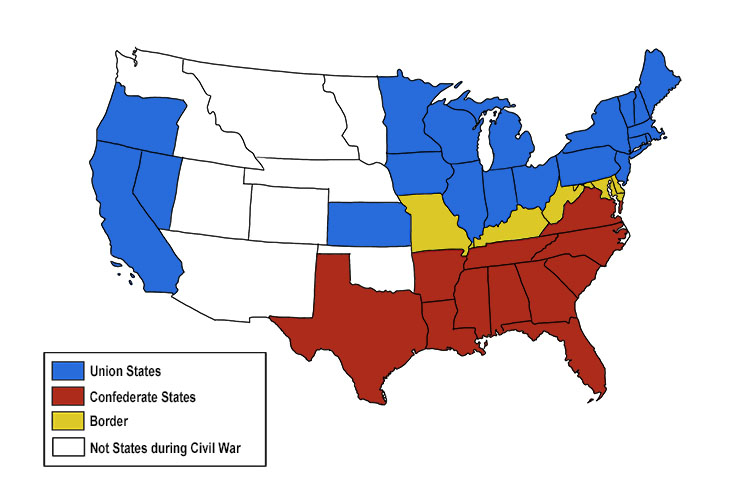
Photo: https://mammothmemory.net/ 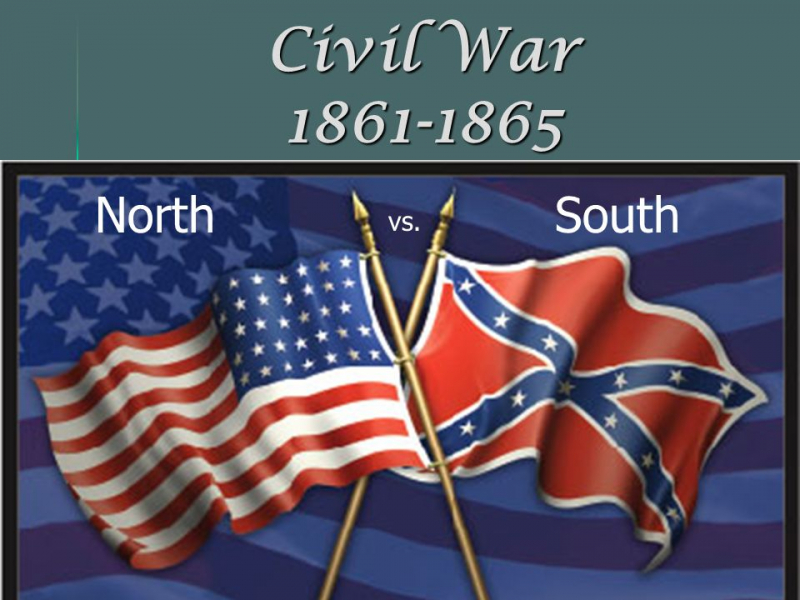
Photo: https://slideplayer.com/ -
Black Union troops were paid significantly less than their white counterparts, despite the Union's primary goals being the unification of the USA and the abolition of slavery. Black soldiers were paid $10 a month when they first enlisted in the Union Army in the early months of 1863. At least $13 was paid to white soldiers, with higher pay for officers. Blacks were further humiliated when their income was reduced to $7 and alone they had to pay a $3 clothing tax each month. As a result, the income of the best-paid black soldier was roughly equal to that of the lowest-paid white man.
Black troops objected to these circumstances by refusing to accept their low pay. Black Union troops protested being paid less than white soldiers for 18 months by refusing to accept their payments. Finally, pressure from abolitionist politicians and the valor displayed by black soldiers in battle convinced Congress to change the payment system. Black troops eventually received equal pay in September 1864, retroactive to the date of their enlistment. This meant that many people could finally send some money to their families back home.
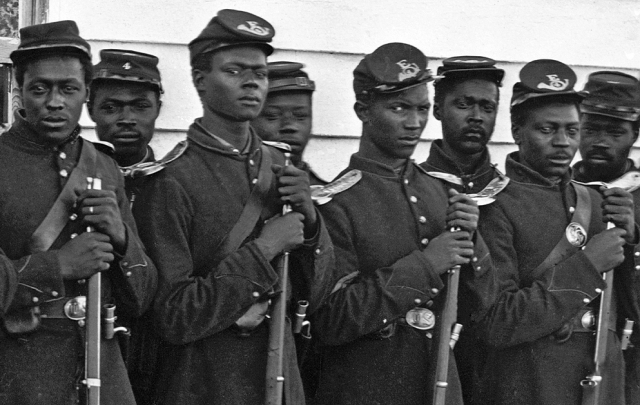
Photo: https://interpretivechallenges.wordpress.com/ 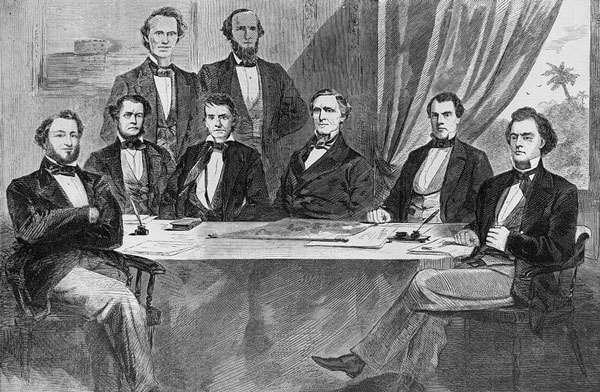
Photo: https://www.berfrois.com/ -
Although they were not allowed to combat in the war by law, many women posed as males to take part. 400–800 women are thought to have participated in the Civil War. However, women who chose not to participate in the fighting performed several other crucial tasks that helped the fighting men. Many women worked as spies or nurses. The most well-known female is Harriet Tubman.
The escaped slave Harriet Tubman, who helped other slaves find freedom before the war, arrived in the Union camp at Port Royal, South Carolina, in the spring of 1862 to aid the cause of the Union. This is one of the most interesting facts about the American Civil War. She started educating freed slaves on trades that would help them get paid by the Union Army. But soon she was conducting river reconnaissance expeditions and obtaining information about the surrounding area from the freed slaves.
With 300 black Union soldiers, Tubman and Union Colonel James Montgomery steamed into the interior on June 1, 1863. As Union gunboats blew their whistles, the troops stormed through surrounding plantations, burning houses, and barns. Tubman was reminded of "the children of Israel, coming out of Egypt" as slave men, women, and children poured in from the countryside. During the trip, more than 720 slaves were transported to freedom. Tubman freed ten times as many slaves in the first raid she led during the Civil War as she had in the previous ten years on the Underground Railroad.
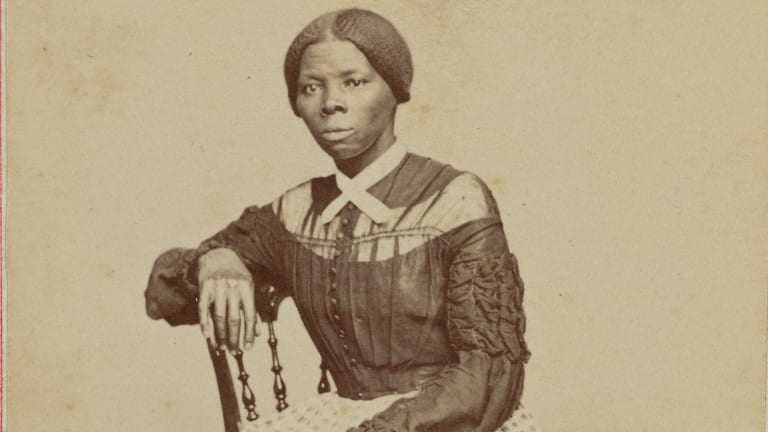
Photo: https://www.history.com/ 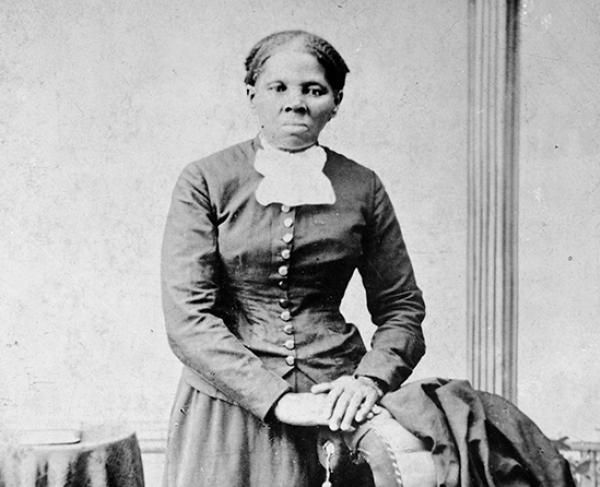
Photo: https://www.battlefields.org/ -
In Kentucky, Abraham Lincoln was raised in a log cabin. Before going into politics in the 1840s, he worked as a shopkeeper and a lawyer. Seven Southern states seceded shortly after his election as president in 1860, and four more states quickly followed, alarmed by his anti-slavery attitude. Lincoln promised to take all necessary steps to maintain the United States' unity as a single nation. The Civil War broke out in the spring of 1861 as a result of his refusal to acknowledge the southern states as a separate country.
Abraham Lincoln advocated for the export of emancipated slaves both before and during the Civil War. Thomas Jefferson, James Madison, Andrew Jackson, Henry Clay, a Lincoln hero, and even Harriet Beecher Stowe, whose characters in "Uncle Tom's Cabin" eventually relocated from the United States to Africa, had backed the colonization policy. Lincoln invited five black clergies to the White House in August 1862 and informed them that the war and slavery had shown that it would be "better for us both, then, to be separated." He even called for a constitutional amendment allowing Congress to finance colonization to transport emancipated black people to Central America. But well-known abolitionists like Frederick Douglass and William Lloyd Garrison found the idea repugnant. The policy was never adopted, and after signing the Emancipation Proclamation, Lincoln made no further mention of it in public.
Lincoln was killed on April 14, 1865, by a southern sympathizer and assassin named John Wilkes Booth. The next morning at 7:22 am, Abraham Lincoln passed away.
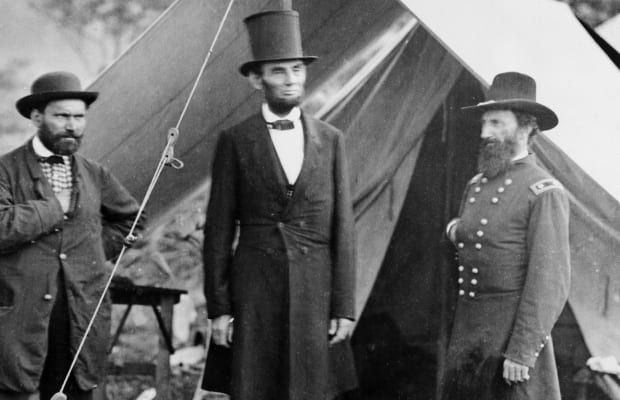
Photo: https://www.history.com/ 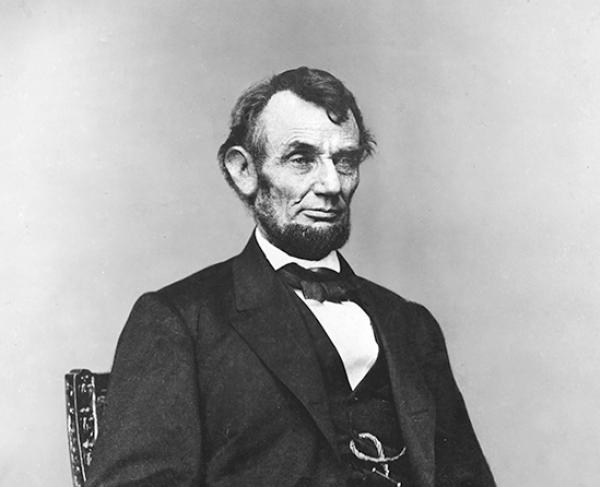
Photo: https://www.battlefields.org/ -
By the middle of the 19th century, slavery was primarily confined to the southern states, where slaves were employed as domestic servants, artisans, and farmhands. The mainstay of the predominantly agrarian southern economy was chattel slavery. The industrial sector dominated the economy in the northern states. Slavery was an institution that many in the north and south thought was morally repugnant and wrong, but it persisted, leaving a wide gap in the political and social landscape. The pressure from northern politicians and "abolitionists," which included the zealot John Brown, made Southerners feel threatened. They asserted that the federal government had no authority to abolish slavery, impose specific taxes, compel the construction of infrastructure, or influence the westward expansion of the United States against the wishes of the state governments.
While other people in the north believed that southern lawmakers had too much influence in the House and Senate and could never be placated. However, leaders from the founding of the United States through the antebellum years tried to reach an agreement on important issues to avoid dividing the nation and ultimately prevent war. The Kansas-Nebraska Act, the Compromise of 1850, the Missouri Compromise, and numerous more agreements failed to prevent war and secession in the nation. Politicians from both sides of the aisle ultimately dug in their heels. The Confederate States of America was created when eleven states seceded from the Union in the following order: South Carolina, Mississippi, Florida, Alabama, Georgia, Louisiana, Texas, Virginia, Arkansas, North Carolina, and Tennessee.
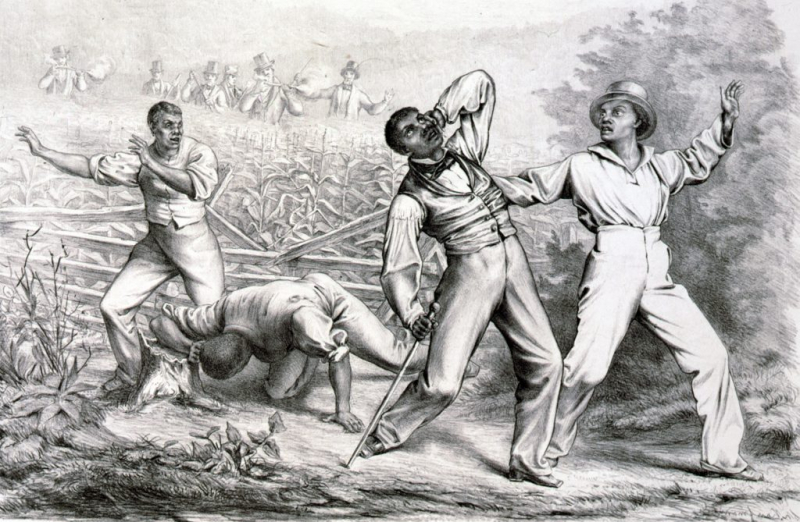
Photo: https://www.historyextra.com/ 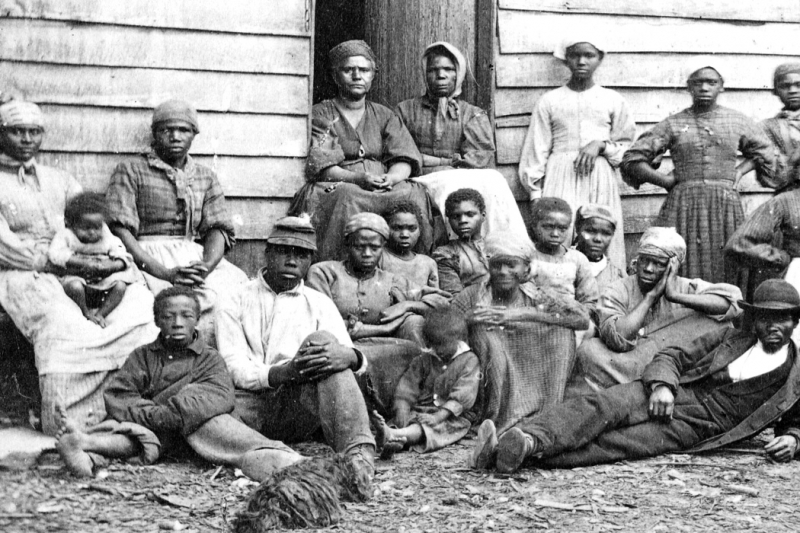
Photo: https://daily.jstor.org/ -
One of the most well-known and bloodiest conflicts of the American Civil War was the Battle of Gettysburg (when taking the total number of casualties into account).
The Confederate states were decimated by the Civil War. Large soldiers were stationed throughout the countryside, which caused a rapid consumption of animals, food, and other necessities. Confederate General Robert E. Lee led a daring assault on the North in the summer of 1863 to amass new supplies and release pressure on the Confederate stronghold at Vicksburg, Mississippi. In a three-day fight near Gettysburg, Pennsylvania, where almost 51,000 soldiers were killed, wounded, or reported missing in action, he was routed by Union General George G. Meade.
Lee's men were successful in gathering the necessary supplies, but they did little to disperse Union forces from Vicksburg, which was captured by Federal forces on July 4, 1863. According to many historians, the Civil War's "turning point" was the Union's simultaneous wins at Gettysburg and Vicksburg, Mississippi. President Lincoln visited the small Pennsylvanian town in November 1863 and gave the Gettysburg Address, one of the most famous addresses in American history, in which he reaffirmed his commitment to upholding the Union.
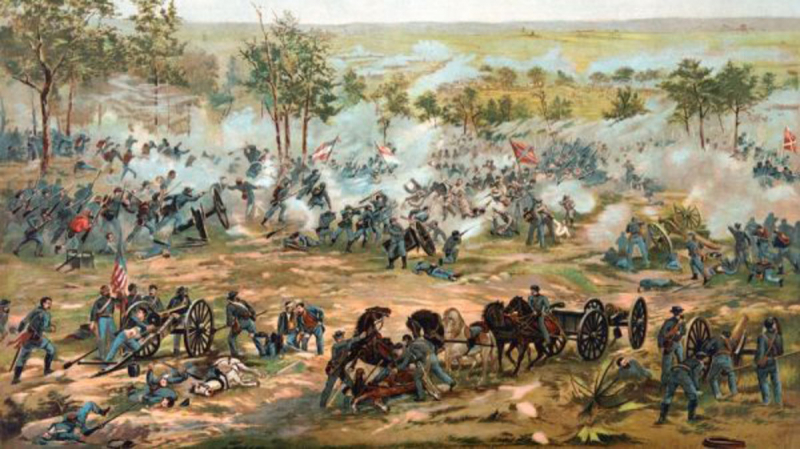
Photo: https://www.history.com/ 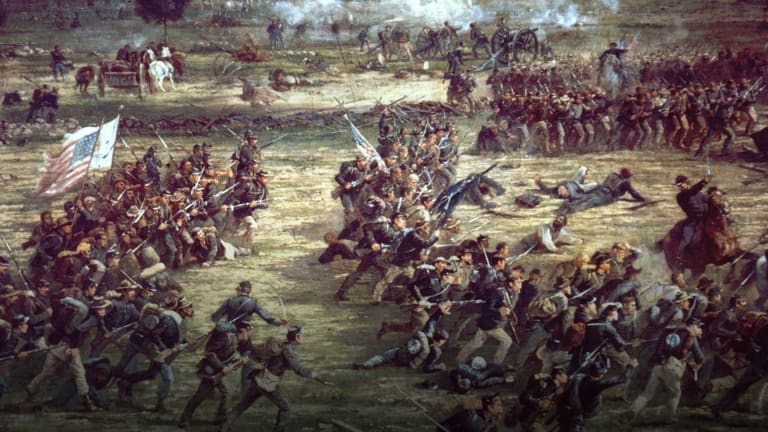
Photo: https://www.history.com/ -
Ulysses S. Grant, who was born in Ohio, and Robert E. Lee, who was born in Virginia, are arguably the two most well-known military figures to have come out of the American Civil War. There wasn't much between the two men. Lee was from a distinguished Virginia First Family with connections to the Continental Army and the country's founding founders. Grant, on the other hand, came from a middle-class family without any political or military links. Both men fought in the old army and the Mexican-American War after graduating from the United States Military Academy at West Point.
In 1861, Lee was allowed to head the federal army that was assembling in Washington, but he turned it down and joined the Confederacy. Lee's early military career had a difficult beginning, but after taking command of the army he named the Army of Northern Virginia in June 1862, he began to find his footing. Grant, on the other hand, saw early success in the war despite persistent suspicions that he was an alcoholic. The two men were unquestionably the best generals in their respective armies by 1863. Grant was given the rank of lieutenant general in March 1864 and transferred to the Eastern Theater of the conflict, where he and Lee waged a relentless campaign from May 1864 until Lee's surrender at Appomattox Court House eleven months later.
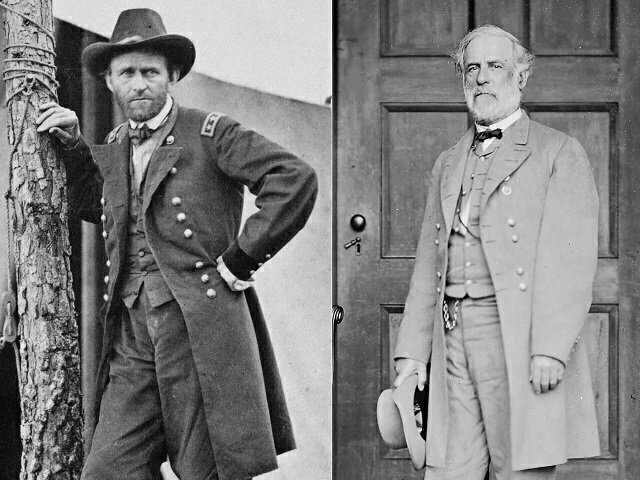
Left: Ulysses S. Grant, right: Robert E. Lee - Photo: https://constitutioncenter.org/ 
Photo: https://www.pinterest.com/ -
Lee and his wife Mary left their 1,100-acre Virginia estate, Arlington, which looked over Washington, D.C., as war descended on Virginia. For failing to pay $92.07 in taxes, the United States government seized it in 1863. Lincoln also approved the construction of a cemetery on the grounds, which included a burial vault in the estate's former rose garden.
According to his biographer Elizabeth Brown Pryor, the plan was that if Lee ever left again, he would "have to look at these graves and realize the carnage that he had made." The Lees considered regaining Arlington after the war but took no action before they passed away. When their eldest son George Washington Custis Lee sued the federal government in 1877 for unlawfully taking possession of Arlington, the Supreme Court agreed with him and returned the property to him. However, the Lee family was powerless to do anything about the estate's body count. For $150,000, George Lee resold it to the government. In the future, Arlington National Cemetery would eventually house the remains of 250,000 soldiers.
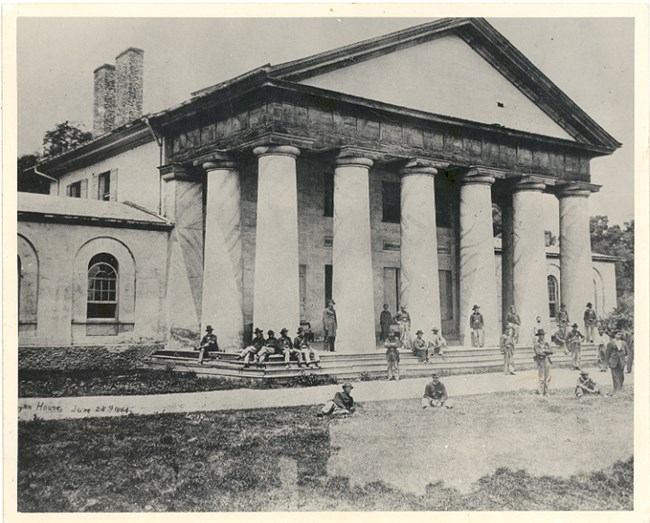
Photo: https://www.nps.gov/ 
Photo: https://stayva.org/ -
In total, there were roughly 10,500 battles conducted throughout the Civil War, with around 50 major engagements and about 100 minor engagements having a significant impact on the outcome. These Civil War data show these amazing war figures. There were numerous other skirmishes, naval engagements, sieges, bombardments, and similar conflicts in addition to the action that is regarded as a true battle. Over 650,000 people died in the war, which spanned 23 different states (the majority of the fighting took place in Virginia).
The battles of the American Civil War were frequently given local geographic names. Some battles in the Civil War have two names: one given by the Union and one by the Confederacy, which might make naming them more difficult. The names of the Union's battles were typically given to nearby or on the battlefield rivers, creeks, or other prominent water features.
The Confederacy, on the other hand, gave its battles the names of surrounding communities, towns, or other man-made monuments. The First Battle of Bull Run for Northerners and the Battle of Antietam for Northerners, or the Battle of Sharpsburg for Southerners, were two of the most well-known battles of the Civil War (the First Manassas for Southerners).
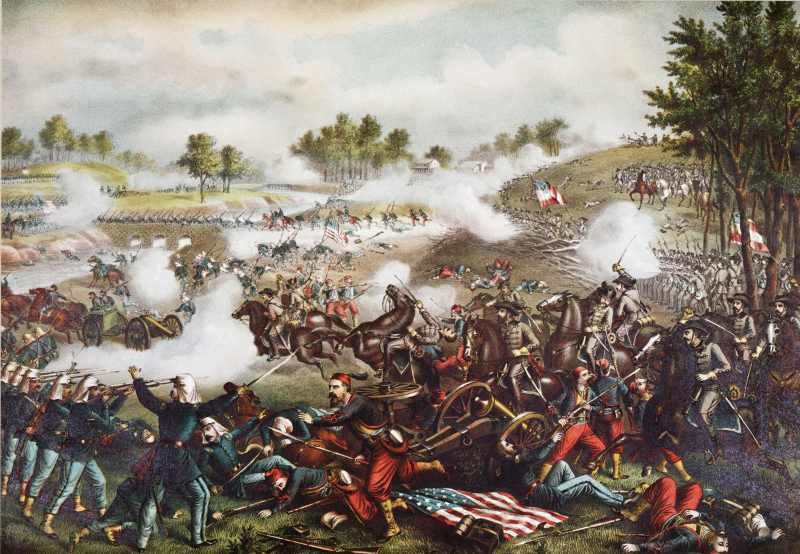
First Battle of Bull Run - Photo: https://en.wikipedia.org/ 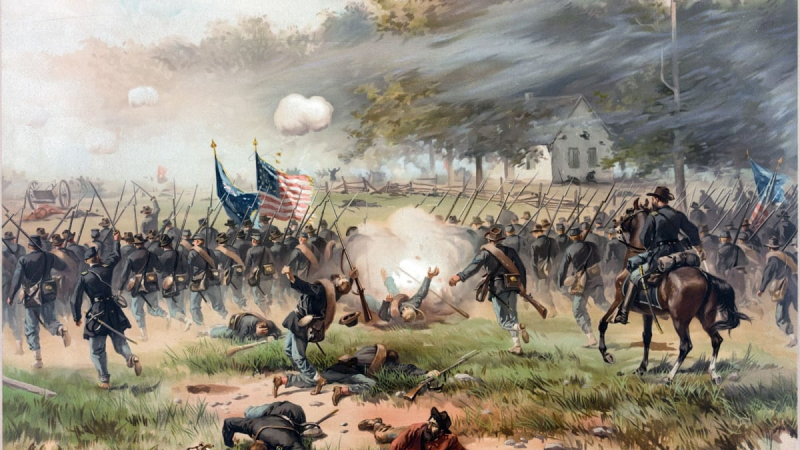
Photo: https://www.history.com/ -
More Americans lost their lives in the Civil War than in World War I, World War II, the Korean War, and the Vietnam War put together (around 625,000 men). The length of the wall would be more than ten times as long if the names of the Civil War dead were arranged similarly to how they are listed on the Vietnam Memorial. 6 million males, or 2% of the population, died in that period.
The deadliest weapons in the conflict were by far rifles, but sickness killed more people. Men who were once shielded from infection by isolation marched shoulder to shoulder and slept side by side in unventilated tents in 1861 as armies gathered. Child illnesses like measles, chicken pox, and mumps spread rapidly in camps. Malaria struck a million Union soldiers, and epidemics were frequent. There were no efficient antiseptics available at the time, and medicine was far from what it is today. This could have significantly slowed the spread of the disease. The Civil War was fought in the very final years of the medical middle ages, according to George Worthington Adams, author of the book "Doctors in Blue: the Medical History of the Union Army in the Civil War." He must have been correct because, at the time, the major drugs employed by doctors were whiskey, ether, or chloroform. There would have been a great deal fewer casualties in the Civil War if medicine had improved at the time.
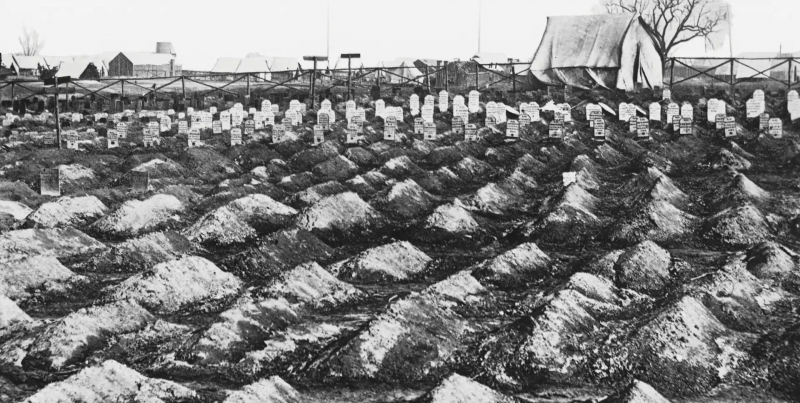
Photo: https://ourstory.jnj.com/ 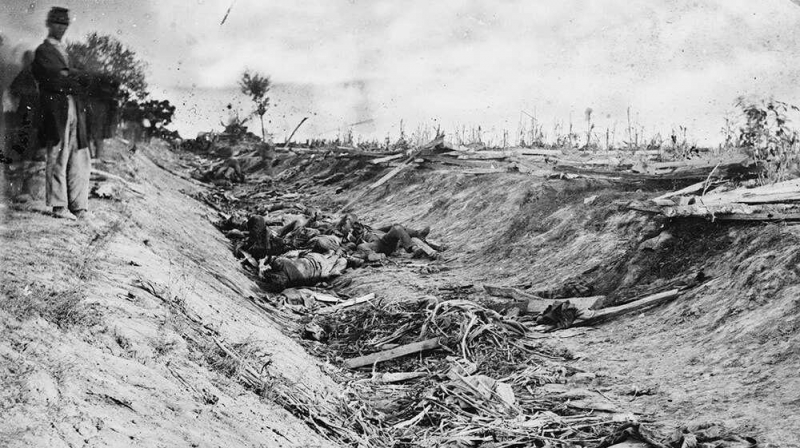
Photo: https://www.npr.org/ -
Nowadays, the Civil War is known to the majority of Americans, and it is most frequently referred to as the American Civil War outside of the United States. The battle has also gone by a variety of titles in the past. It has been referred to as the War to Make Men Free, the War of the Southern Rebellion, or simply the War of Rebellion by people in the North.
Southerners have referred to it as the War Between the States or the War of Northern Aggression, and they still do so occasionally. For those who didn't want to offend either side, there were two other popular neutral phrases at the time: the Late Unpleasantness and Mr. Lincoln's War.
One of the most interesting facts about the American Civil War is that the American Civil War is regarded as the first modern war in human history since it introduced several cutting-edge weapons and combat methods. Mines, rapid-fire guns, rifles, submarines, railroads, ironclad ships, aerial surveillance, as well as telegraphs and telephony for military intelligence, were all used in this advanced warfare.
The Civil War was also the first industrial conflict; in this conflict, the industry was heavily utilized for the war effort, with civilian factories, shipyards, banks, and transportation firms all playing crucial roles in the conflict.
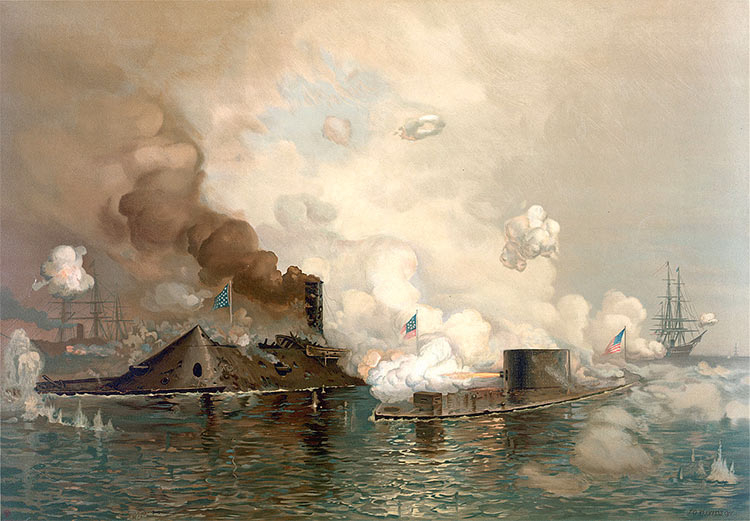
Photo: https://www.historytoday.com/ 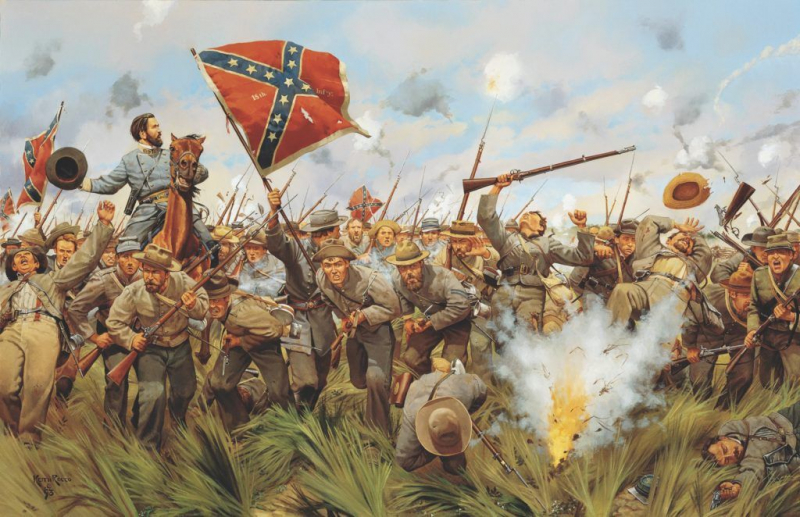
Photo: https://www.historynet.com/ -
It makes sense to refer to the abolition of slavery as the most significant outcome of the Civil War as it was one of the primary causes of the war's outbreak.
The Constitution was changed after the war to free the slaves, guarantee "equal protection under the law" for all Americans, and give black males the right to vote. Abraham Lincoln granted some slaves their freedom during the conflict and let freedmen enlist in the Union Army as the United States Colored Troops (U.S.C.T.). Many people understood that the complete abolition of slavery was simply a question of time.
The 13th, 14th, and 15th amendments to the Constitution were added by the northern states as the war came to an end, but before the southern states were once again admitted to the union. The changes are often referred to as the "Civil War Amendments." The 13th Amendment formally ended slavery in the US, the 14th Amendment established the principle of "equal protection under the law," and the 15th Amendment guaranteed the right to vote to black men. As long as various citizen groups continue to advocate for equal treatment by the government, the 14th Amendment will continue to play a significant role in American culture. The Constitution was changed, which is considered one of the most interesting facts about the American Civil War.
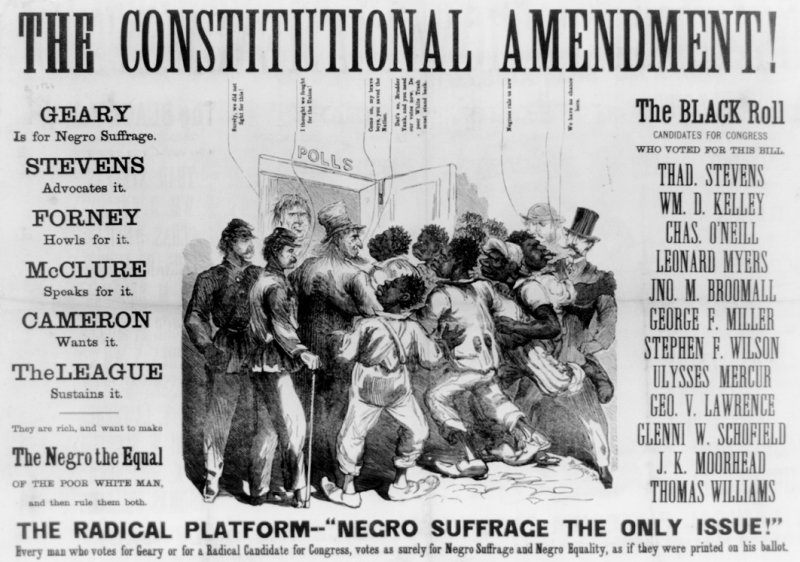
Photo: https://www.historians.org/ Source: https://www.youtube.com/














